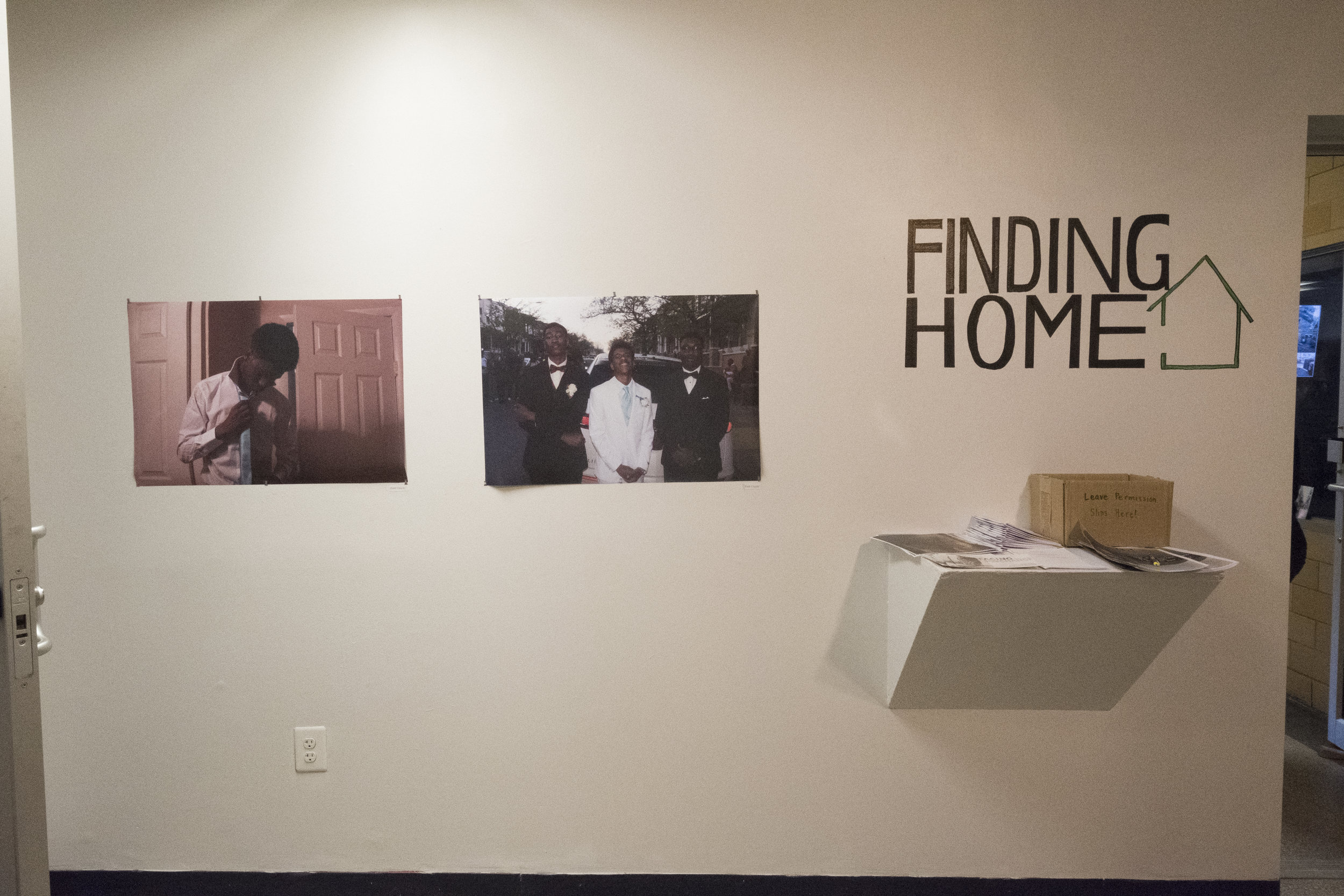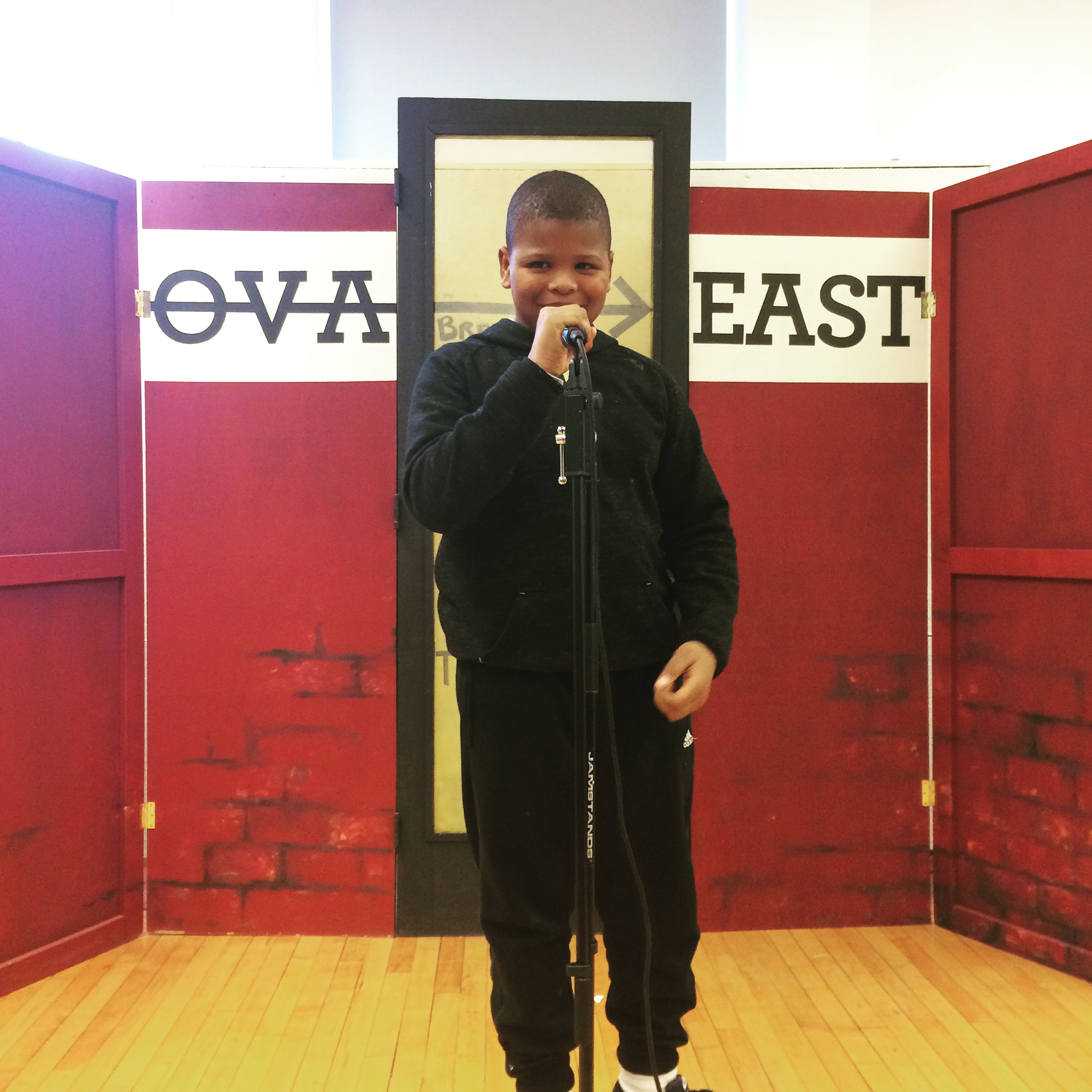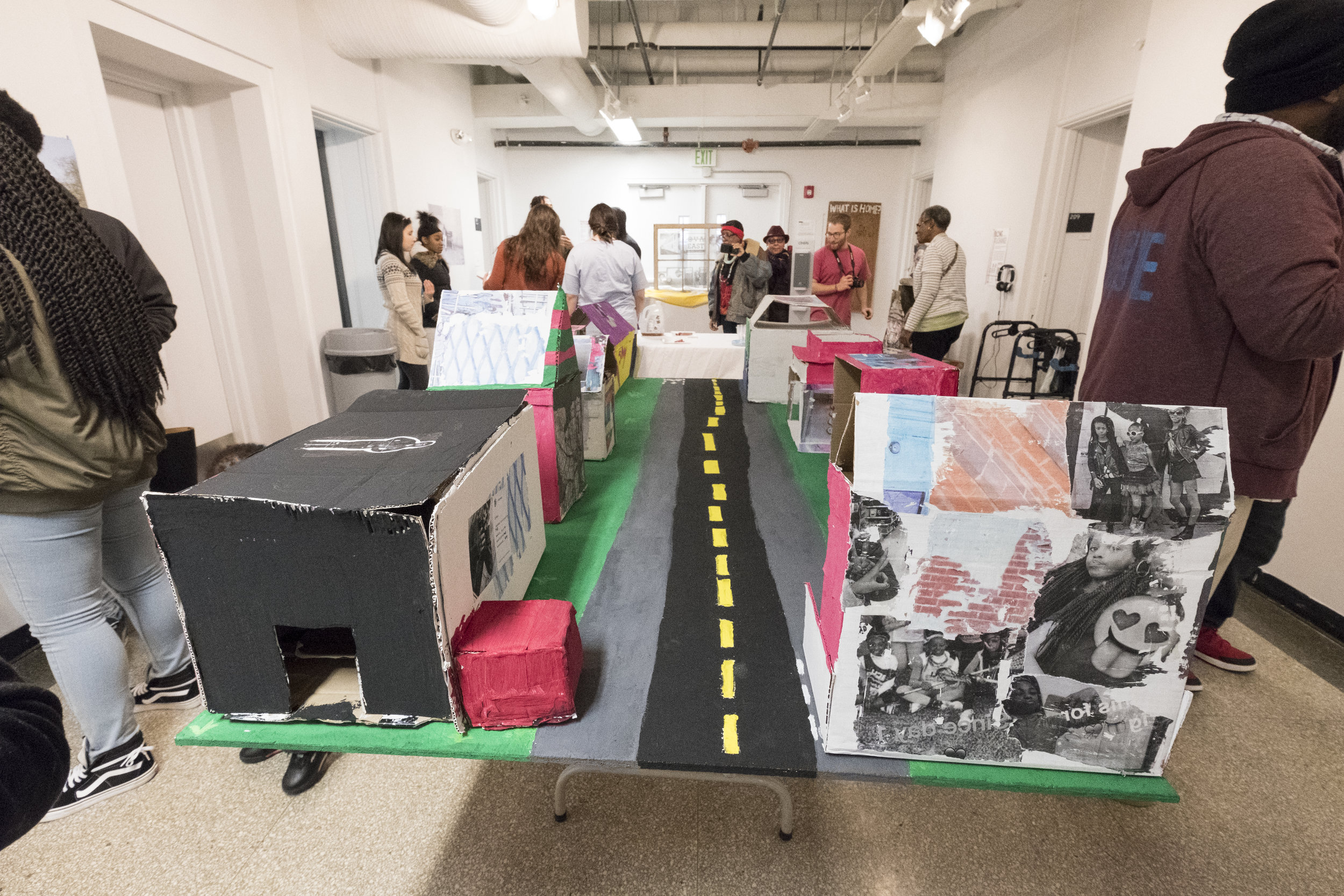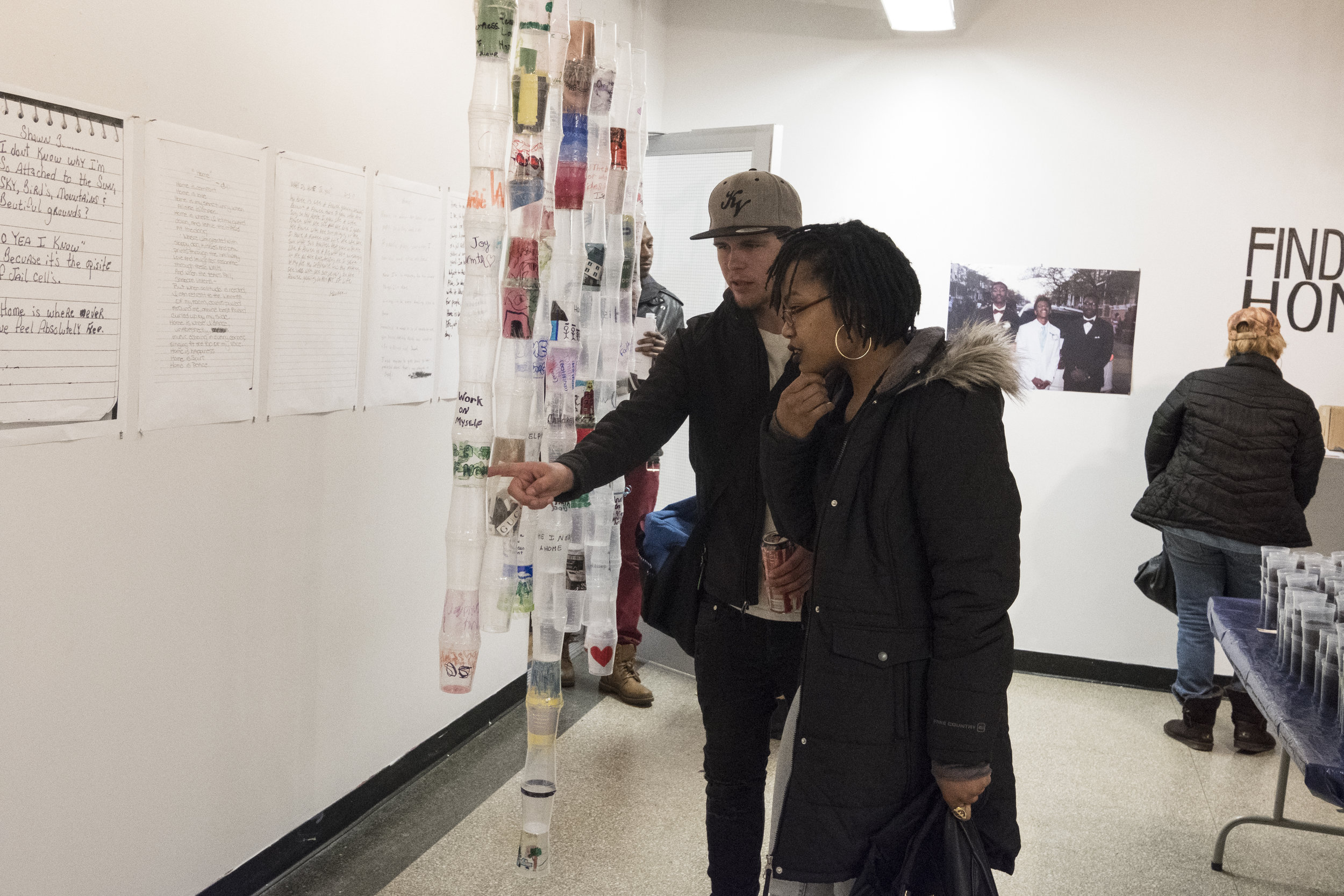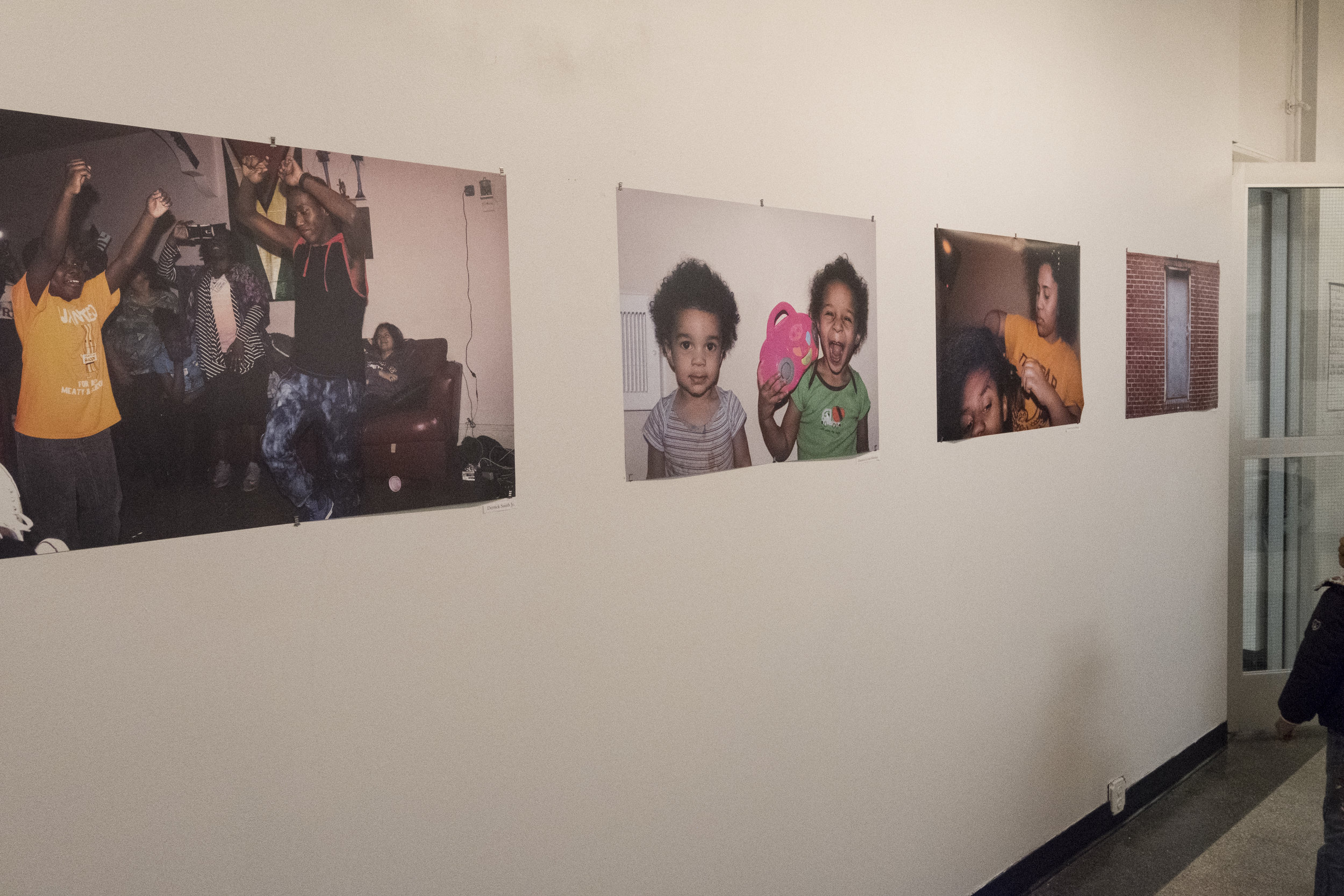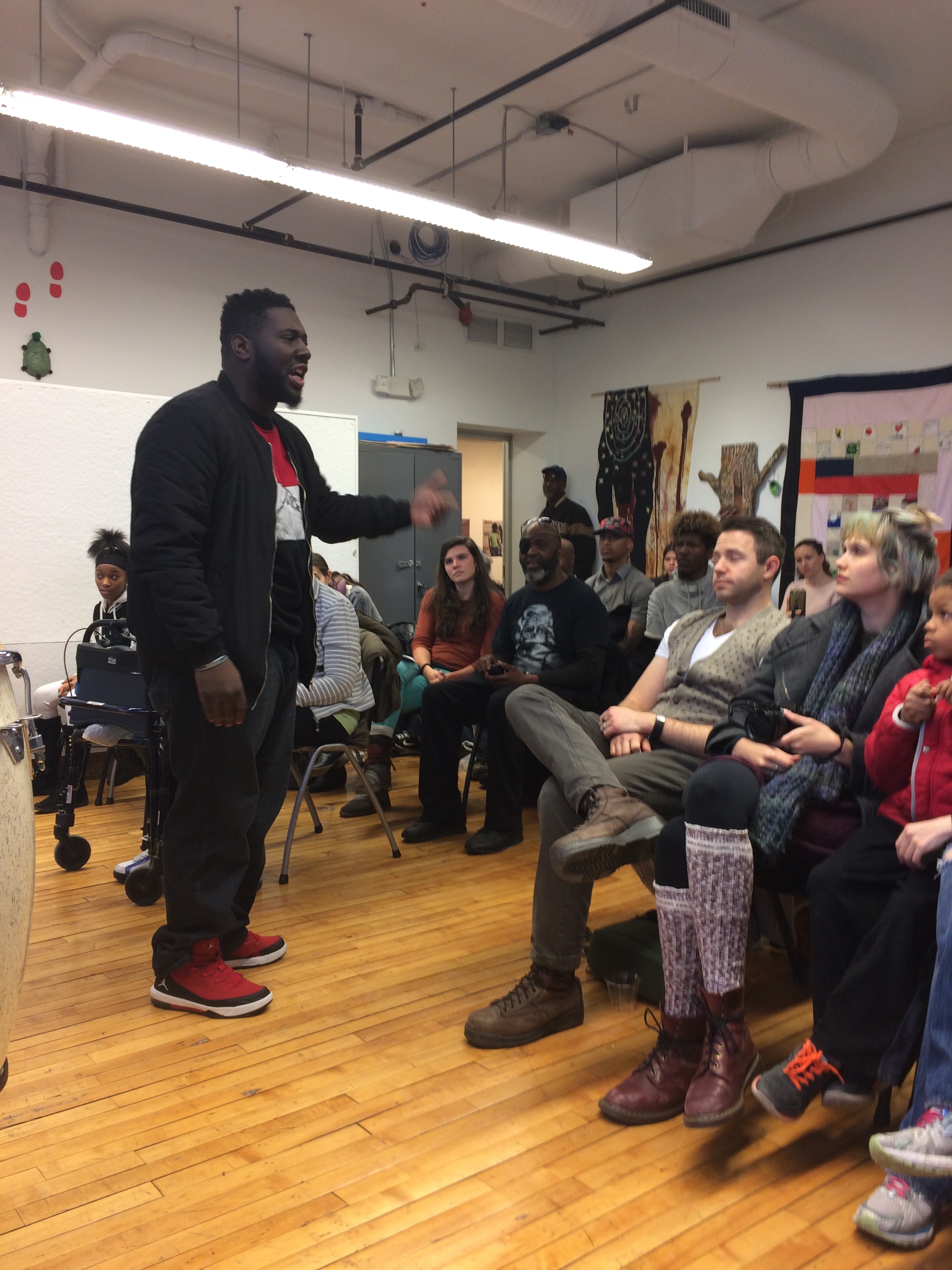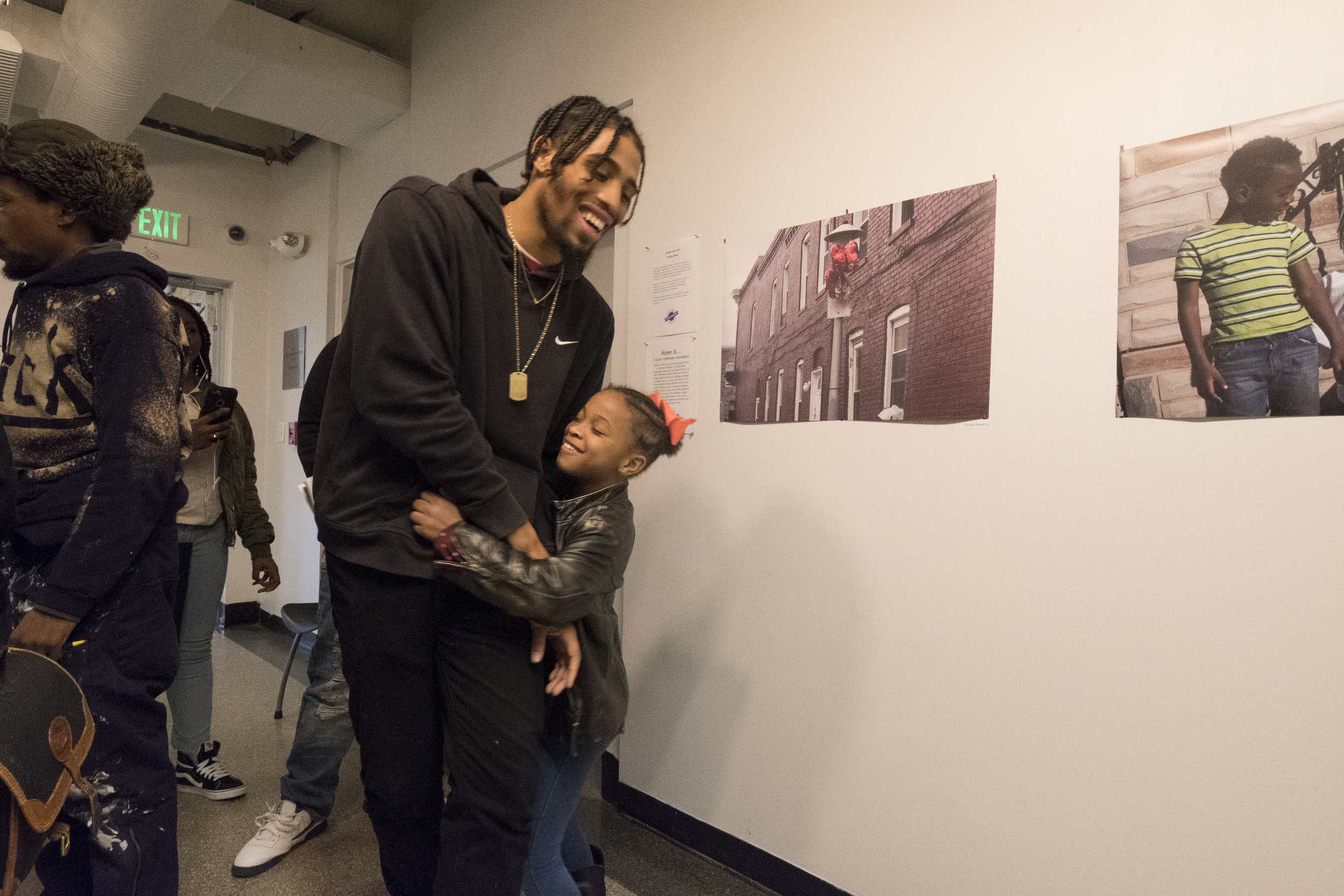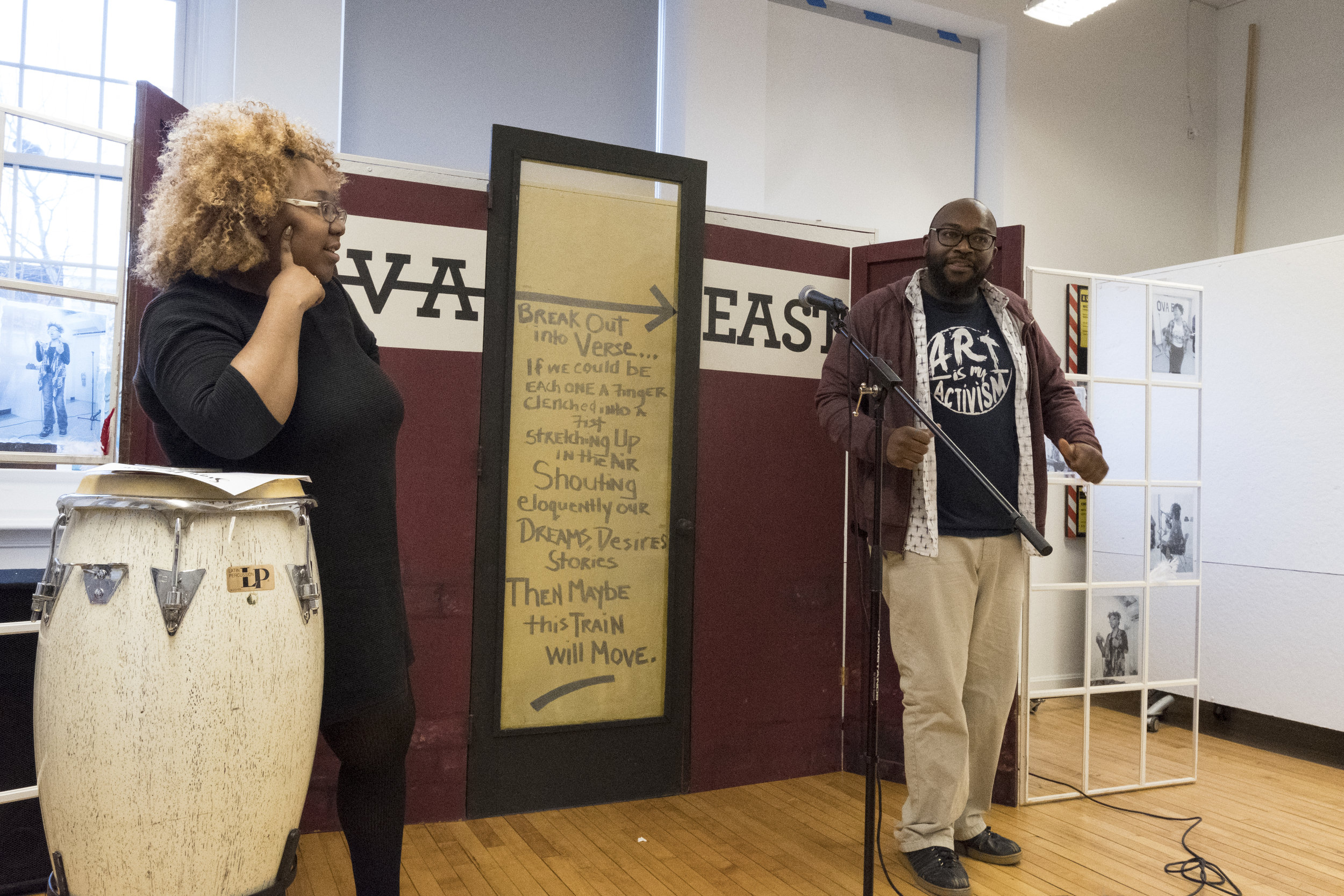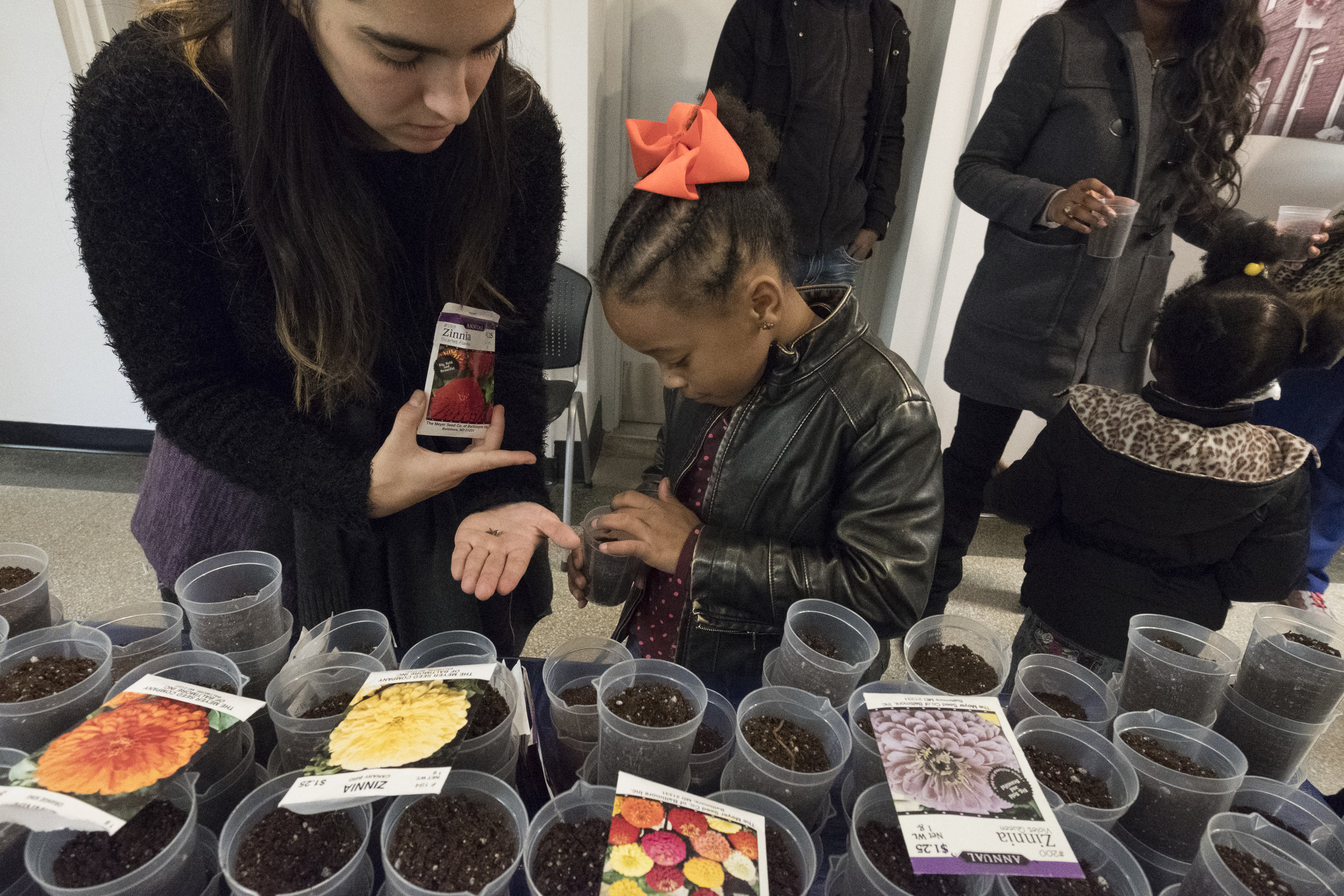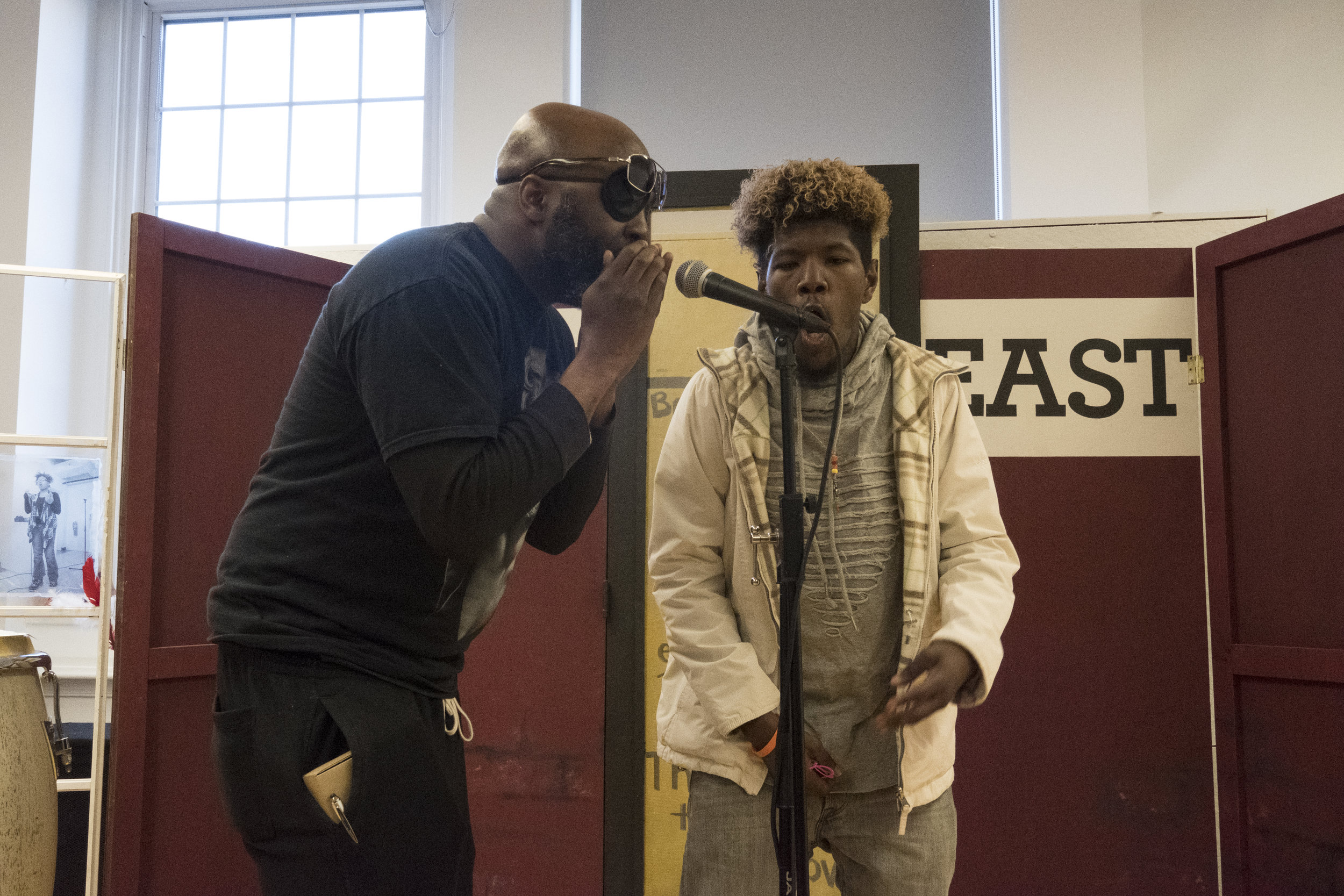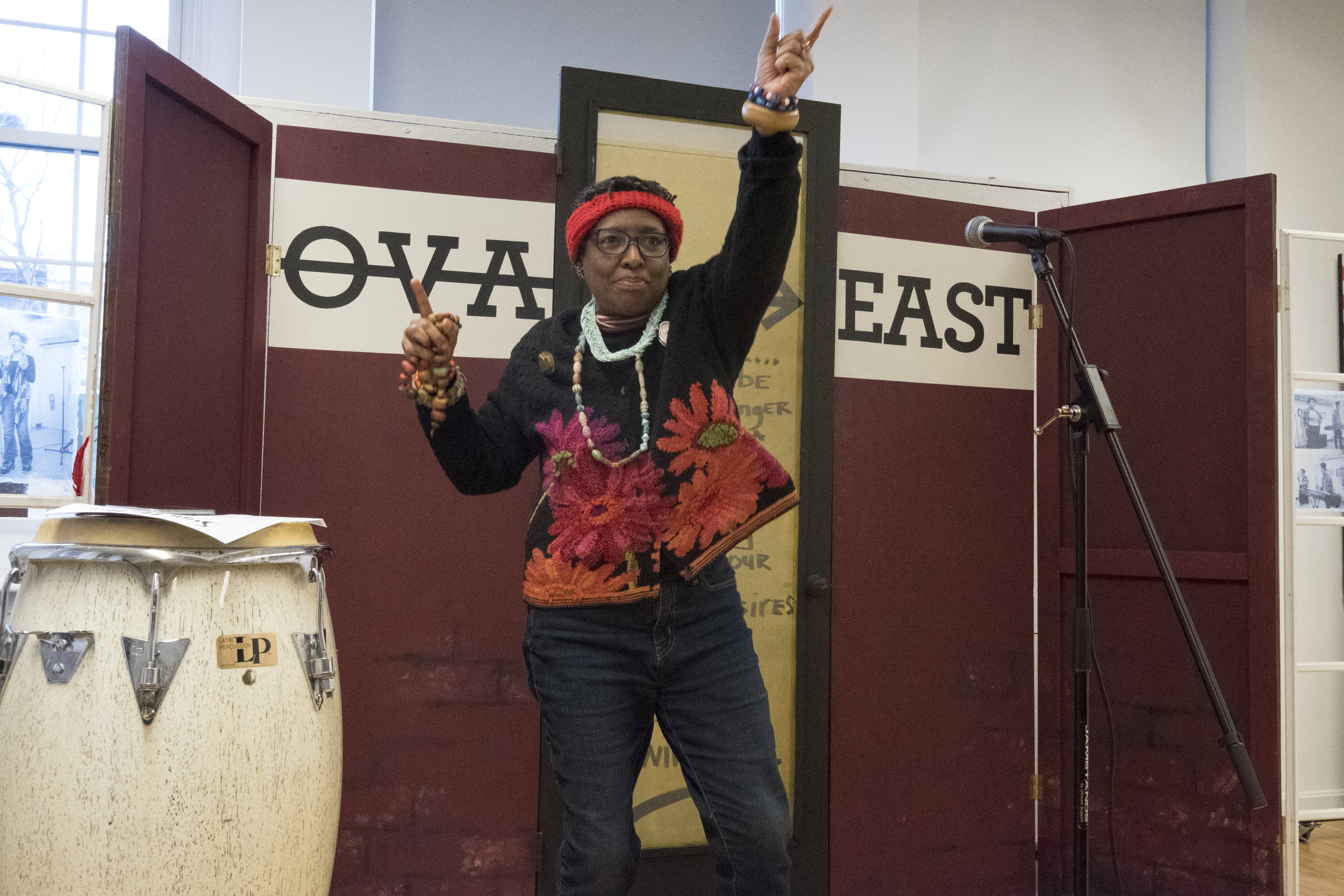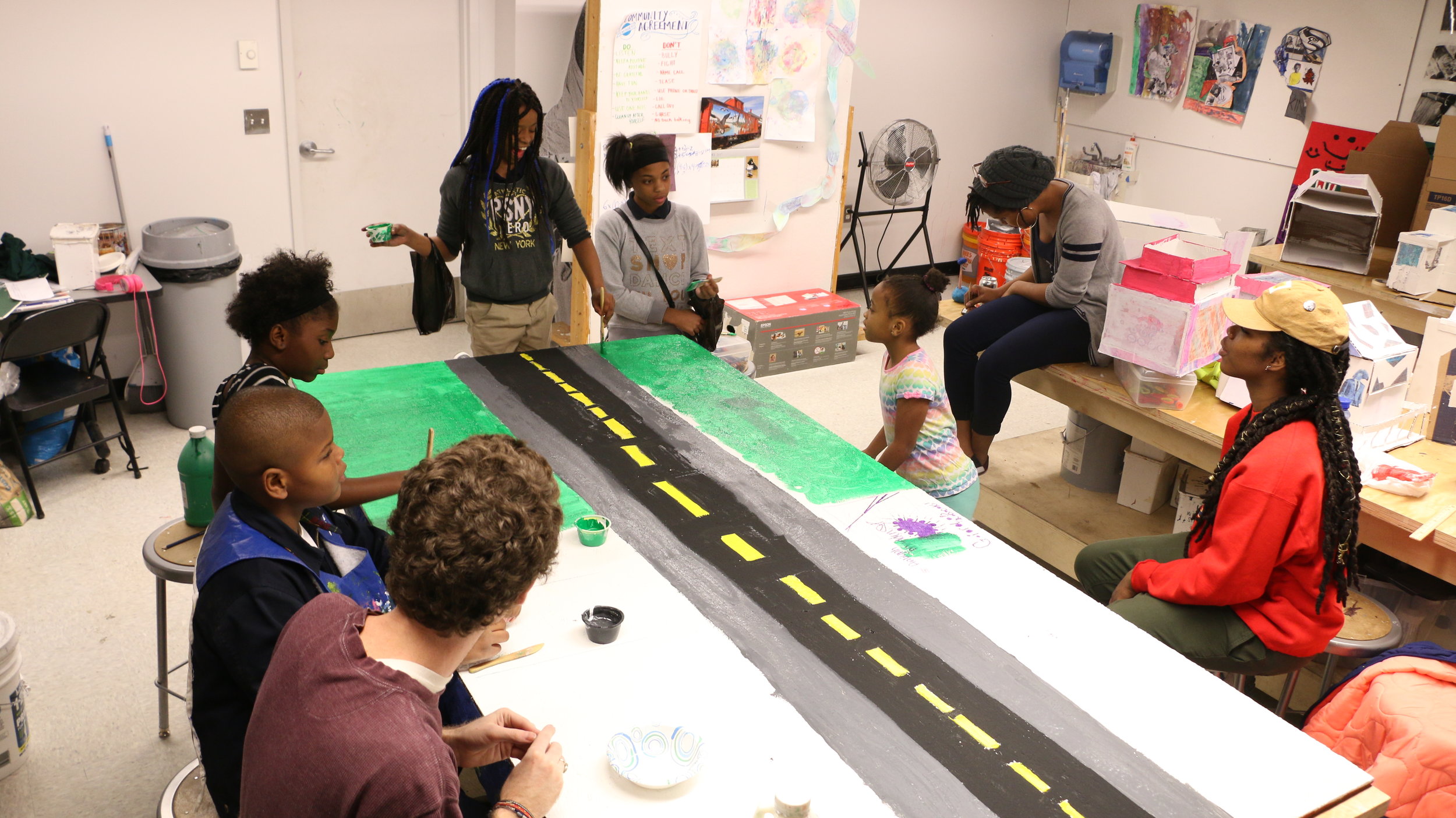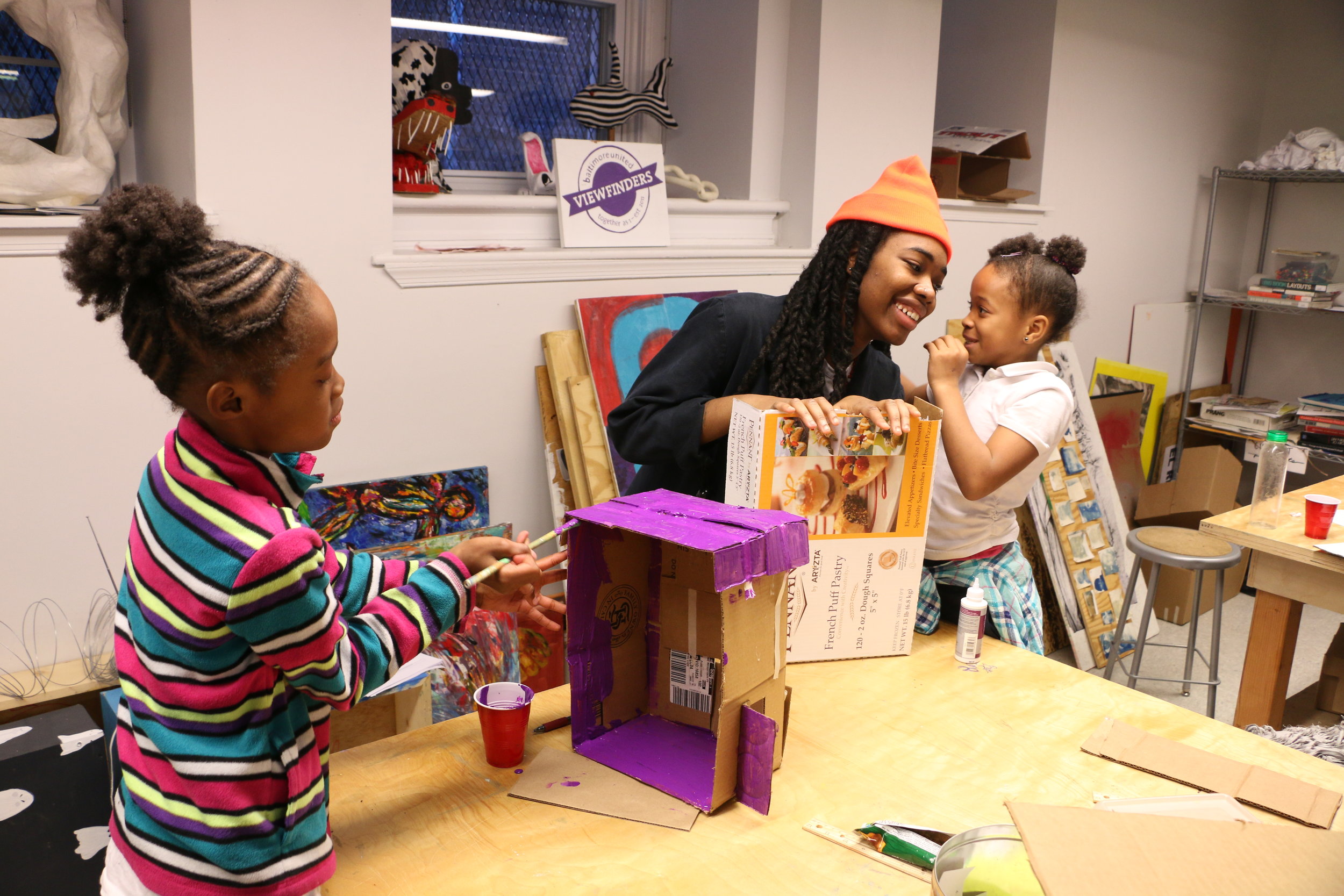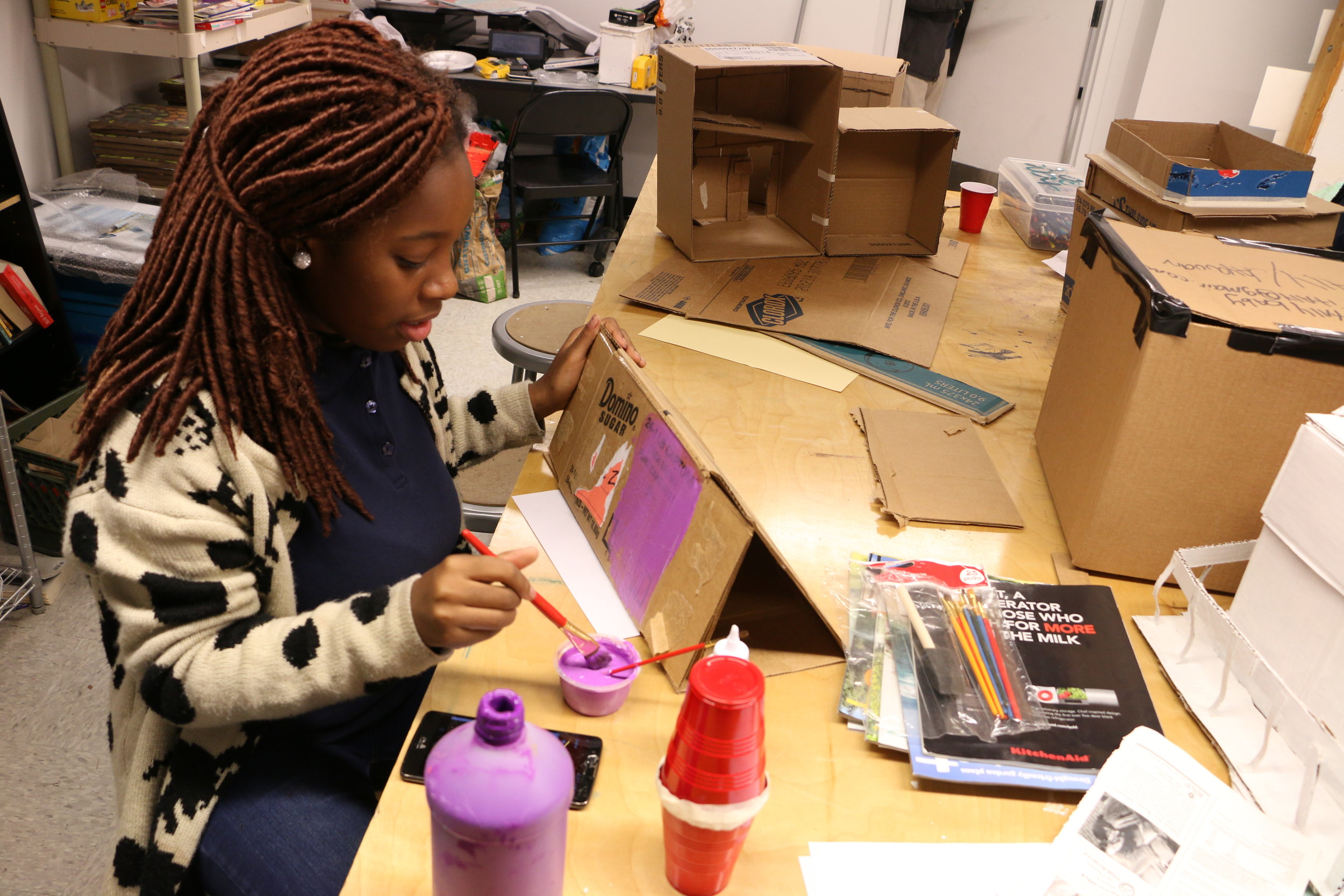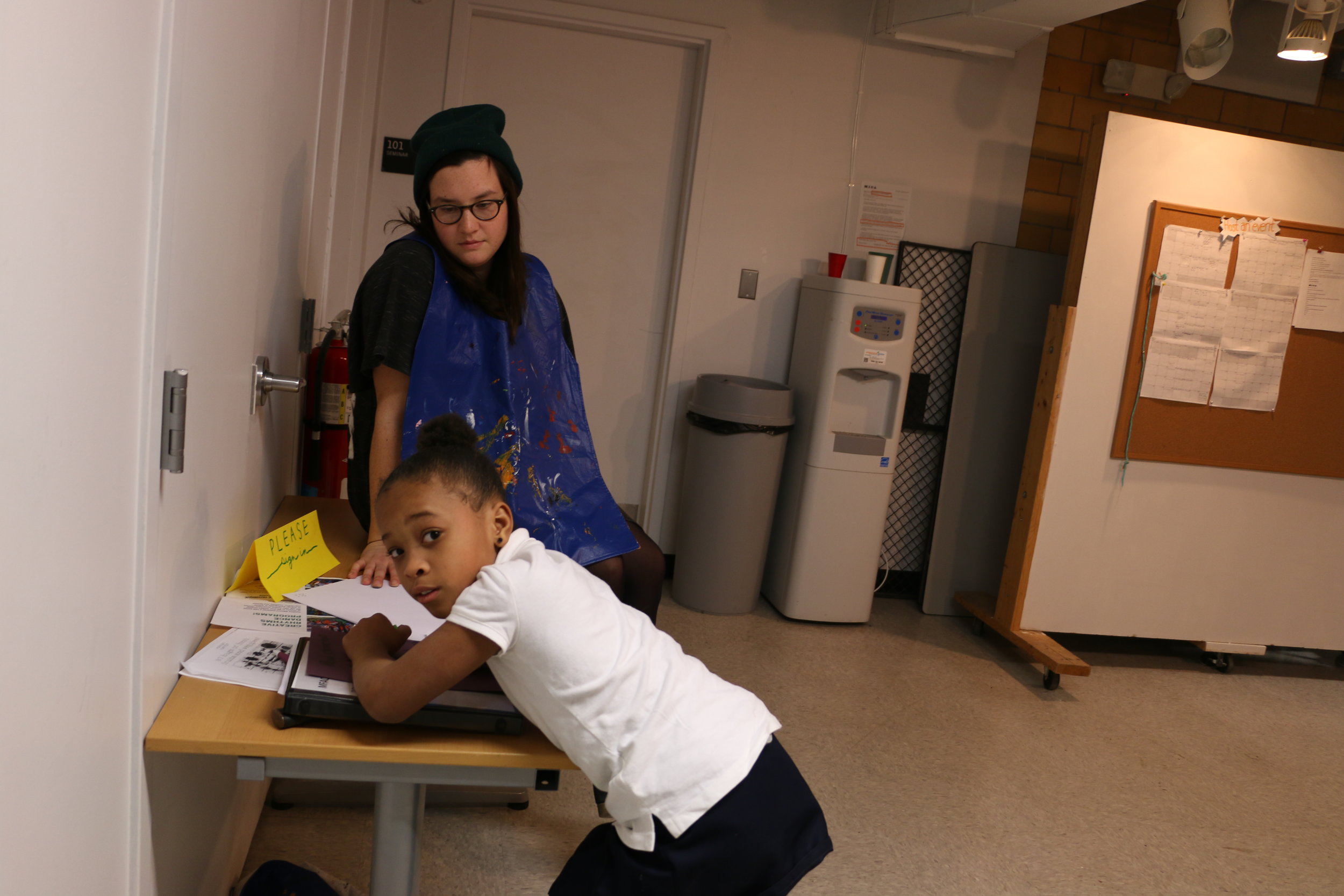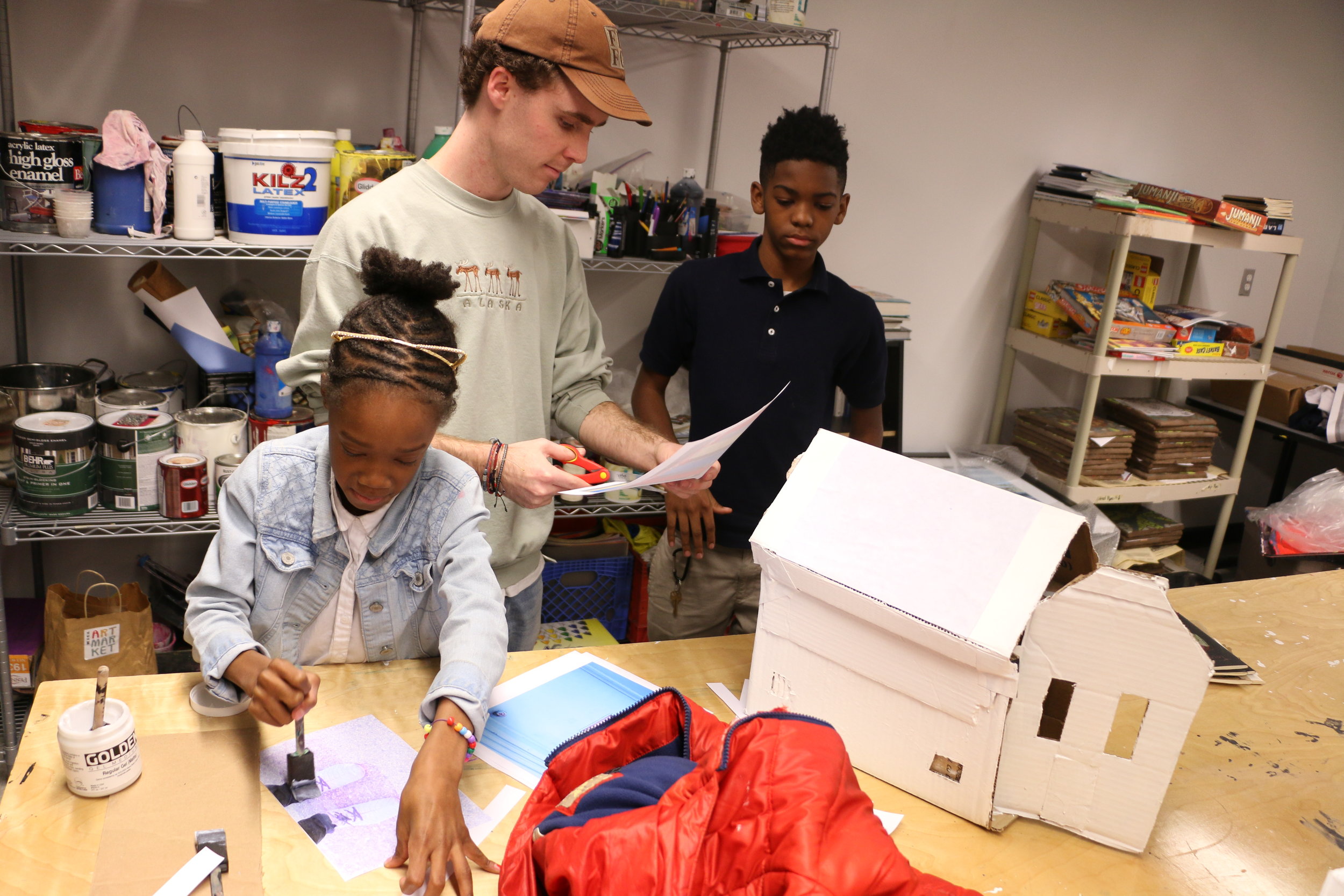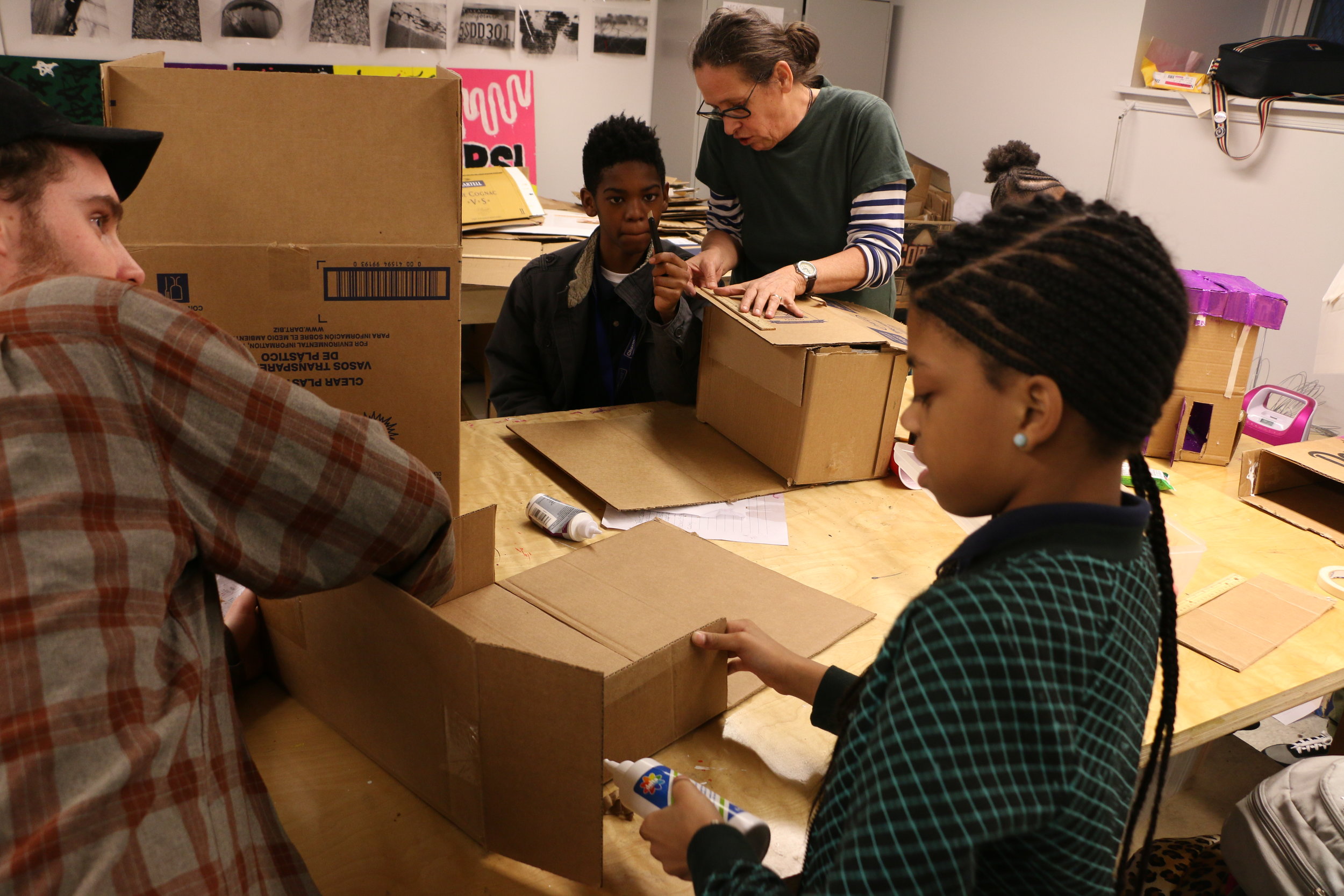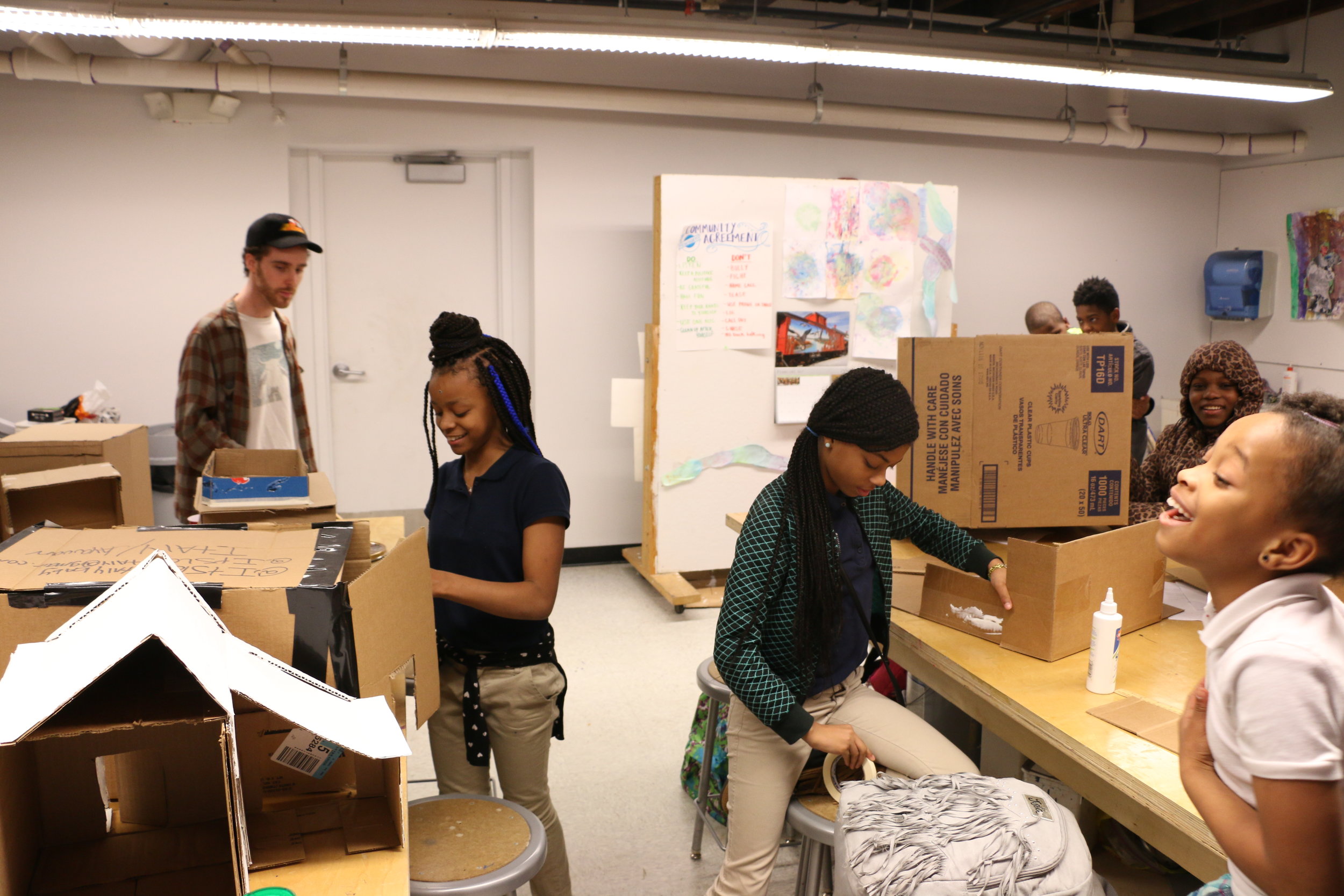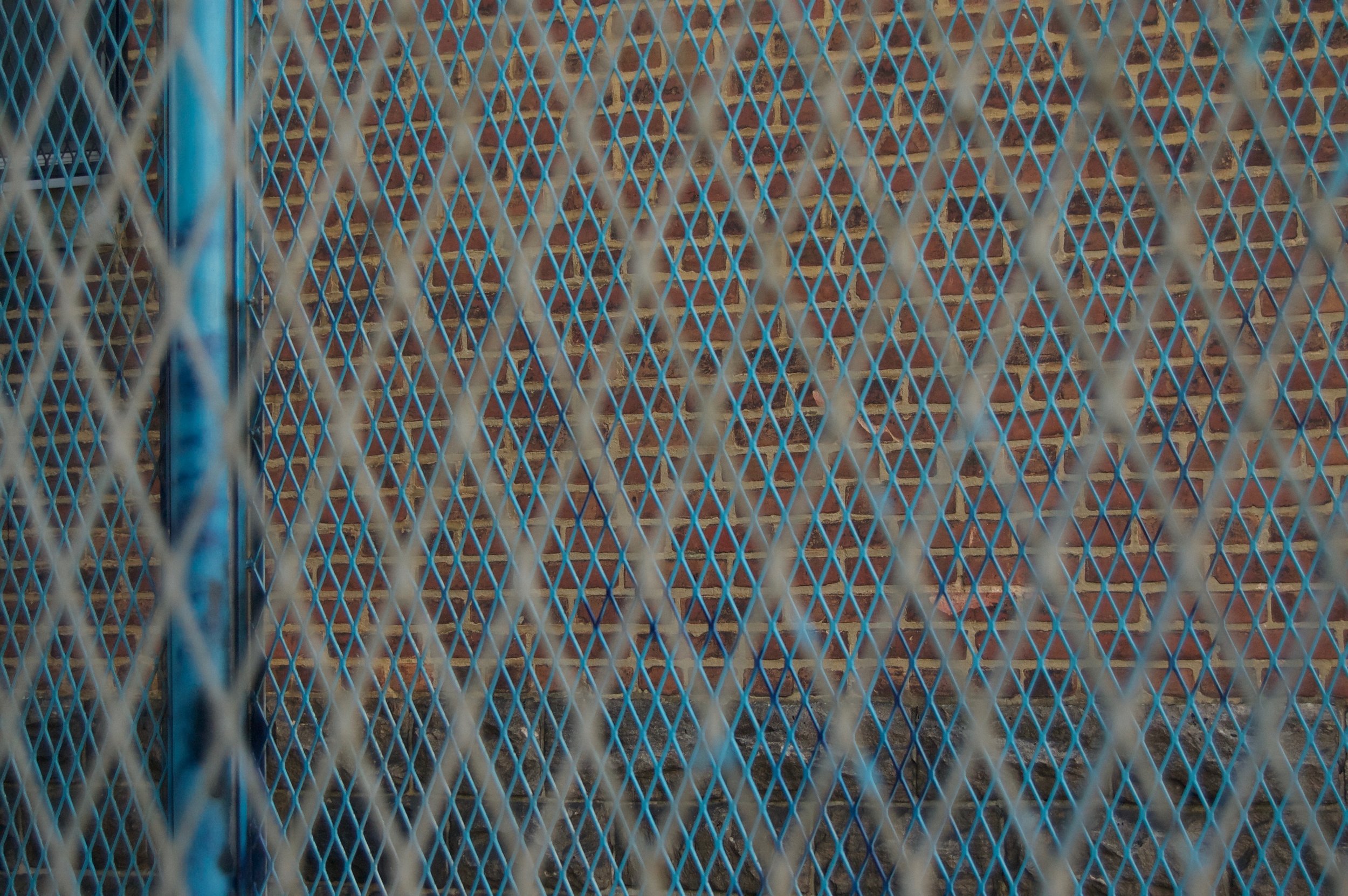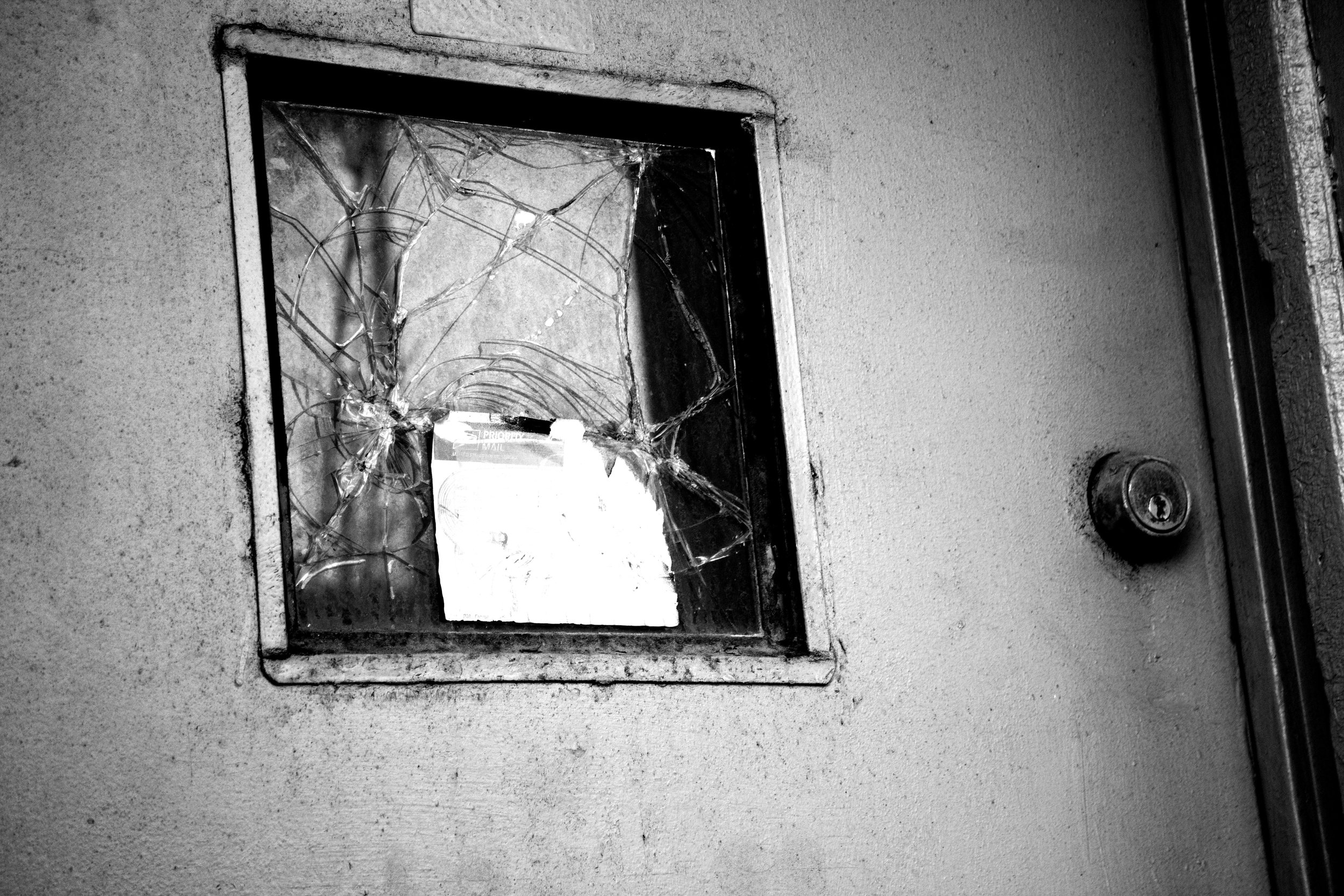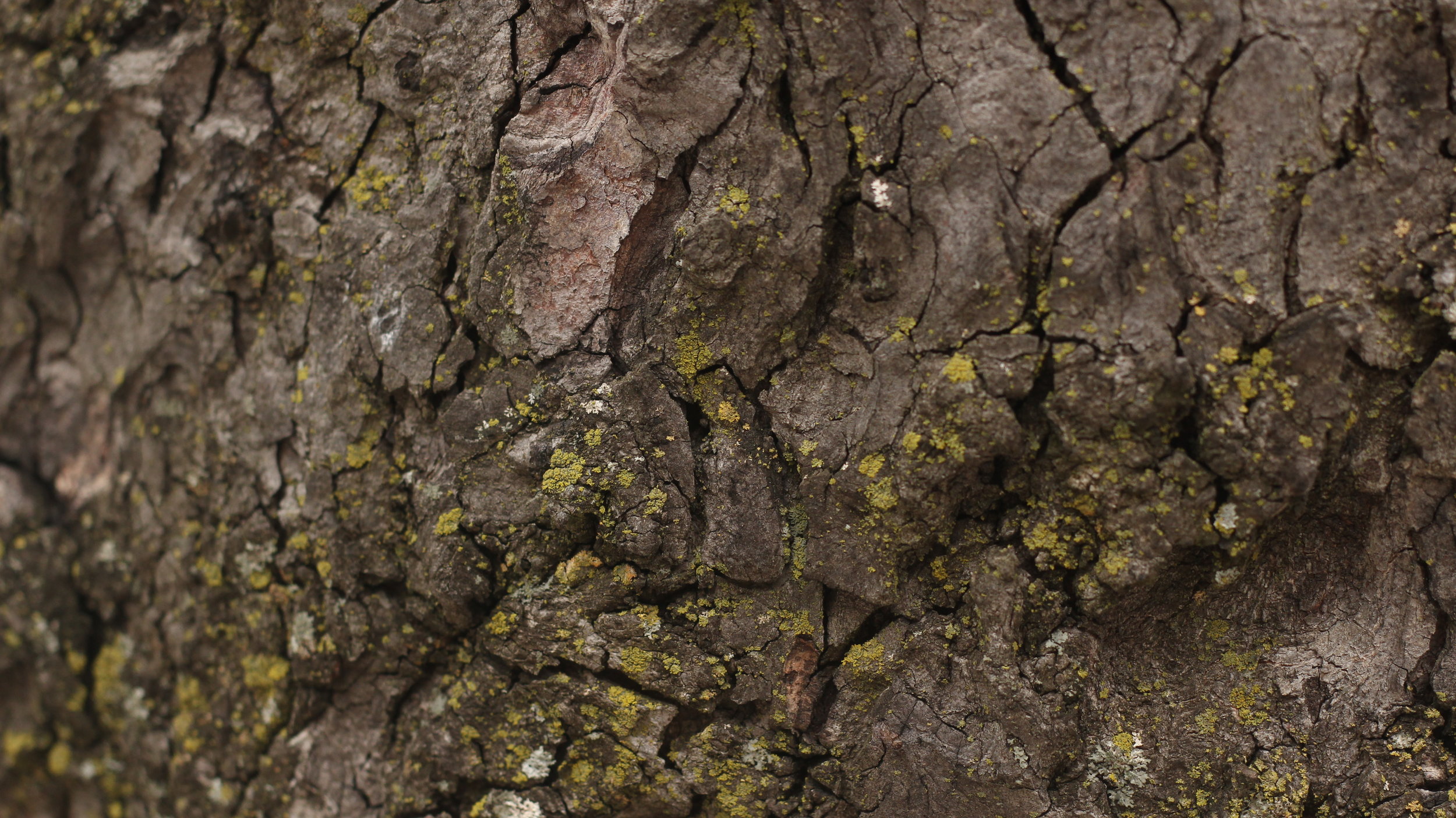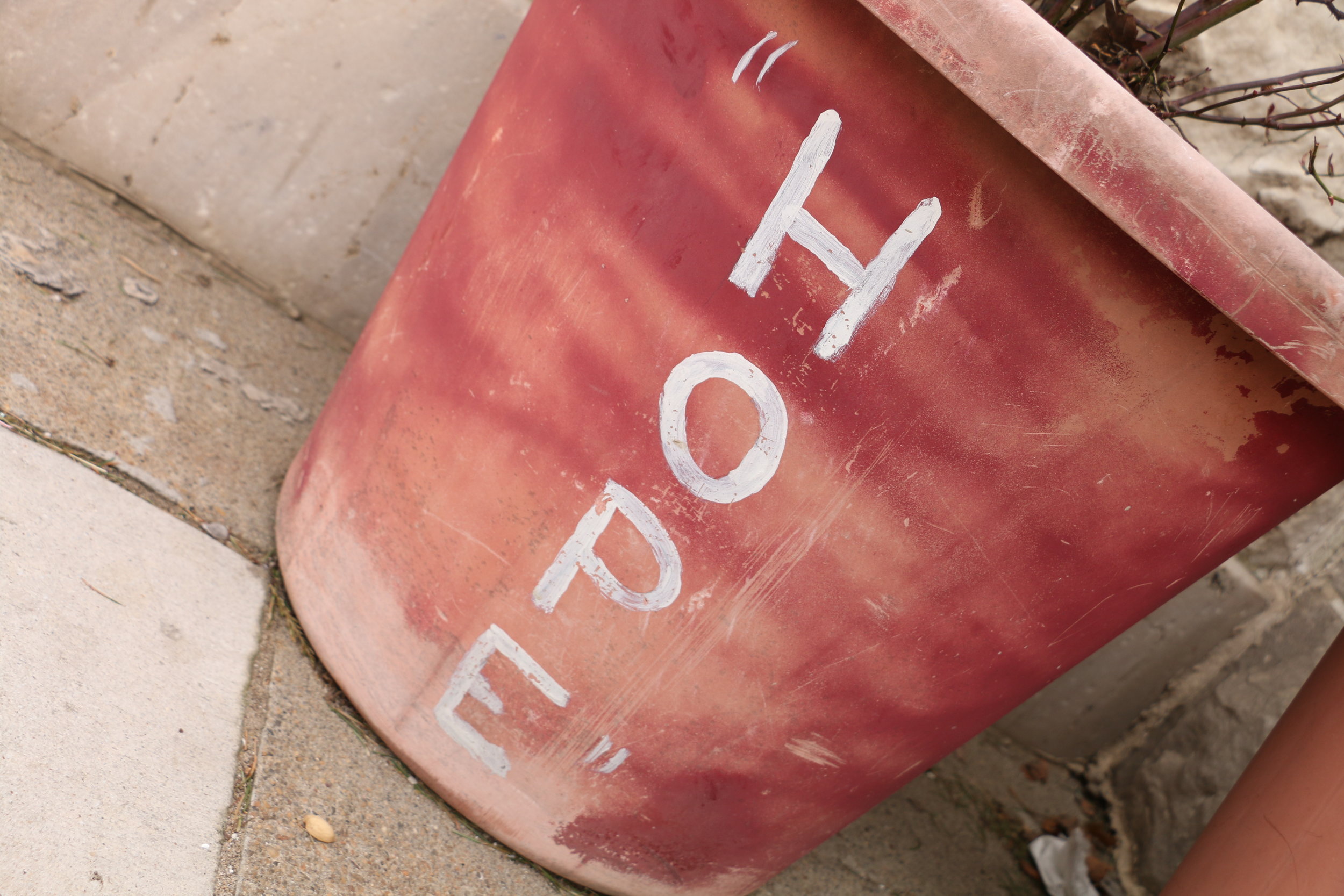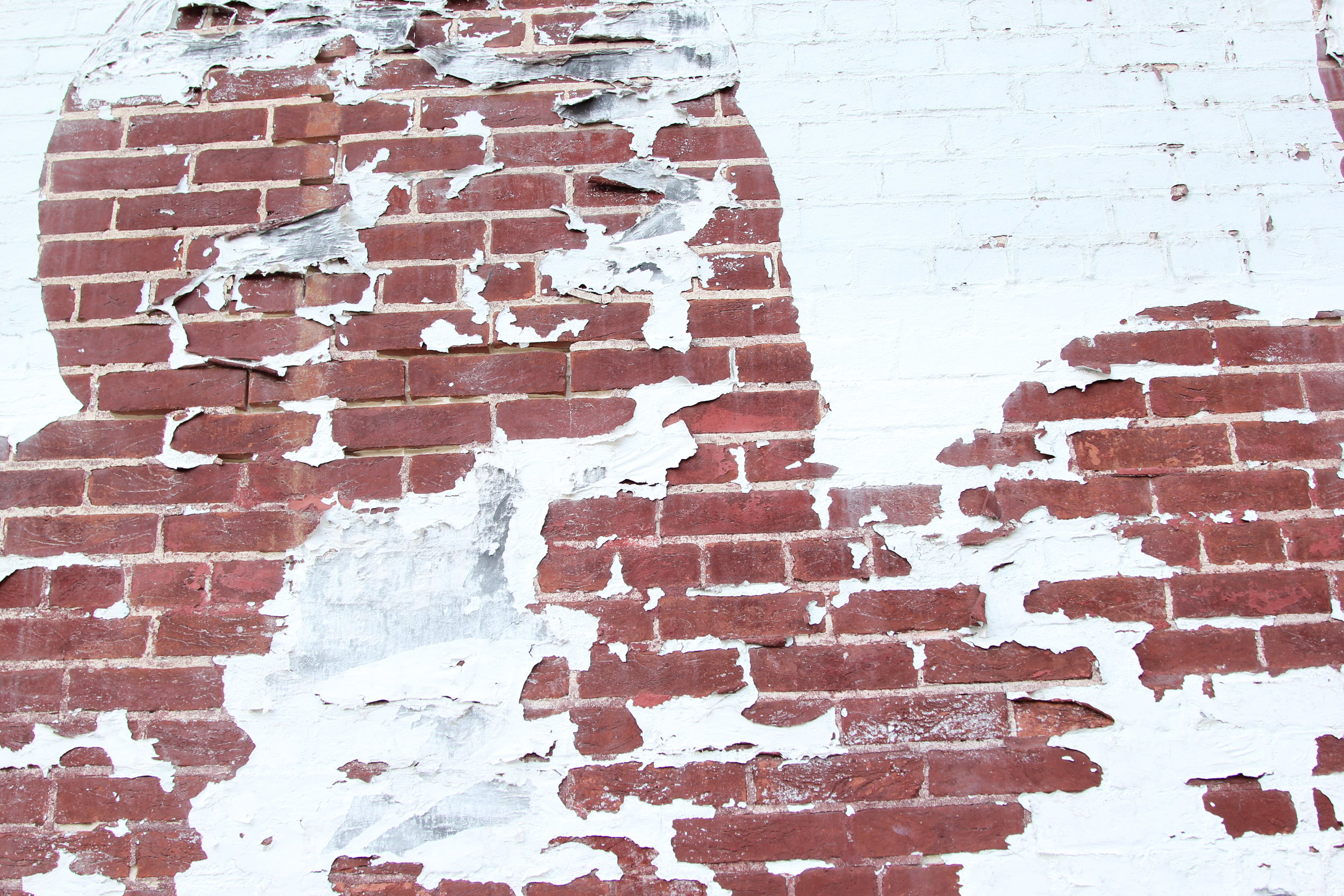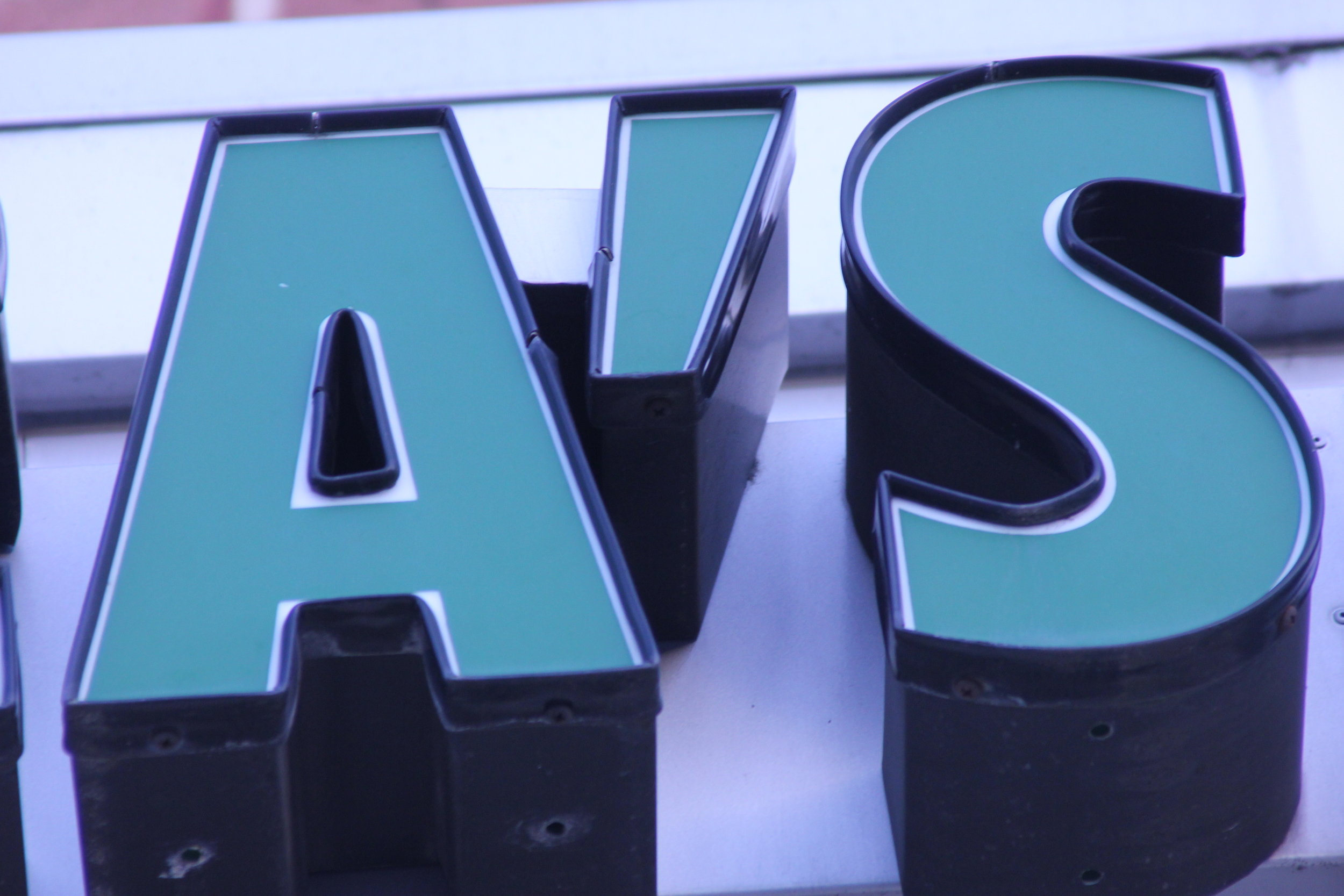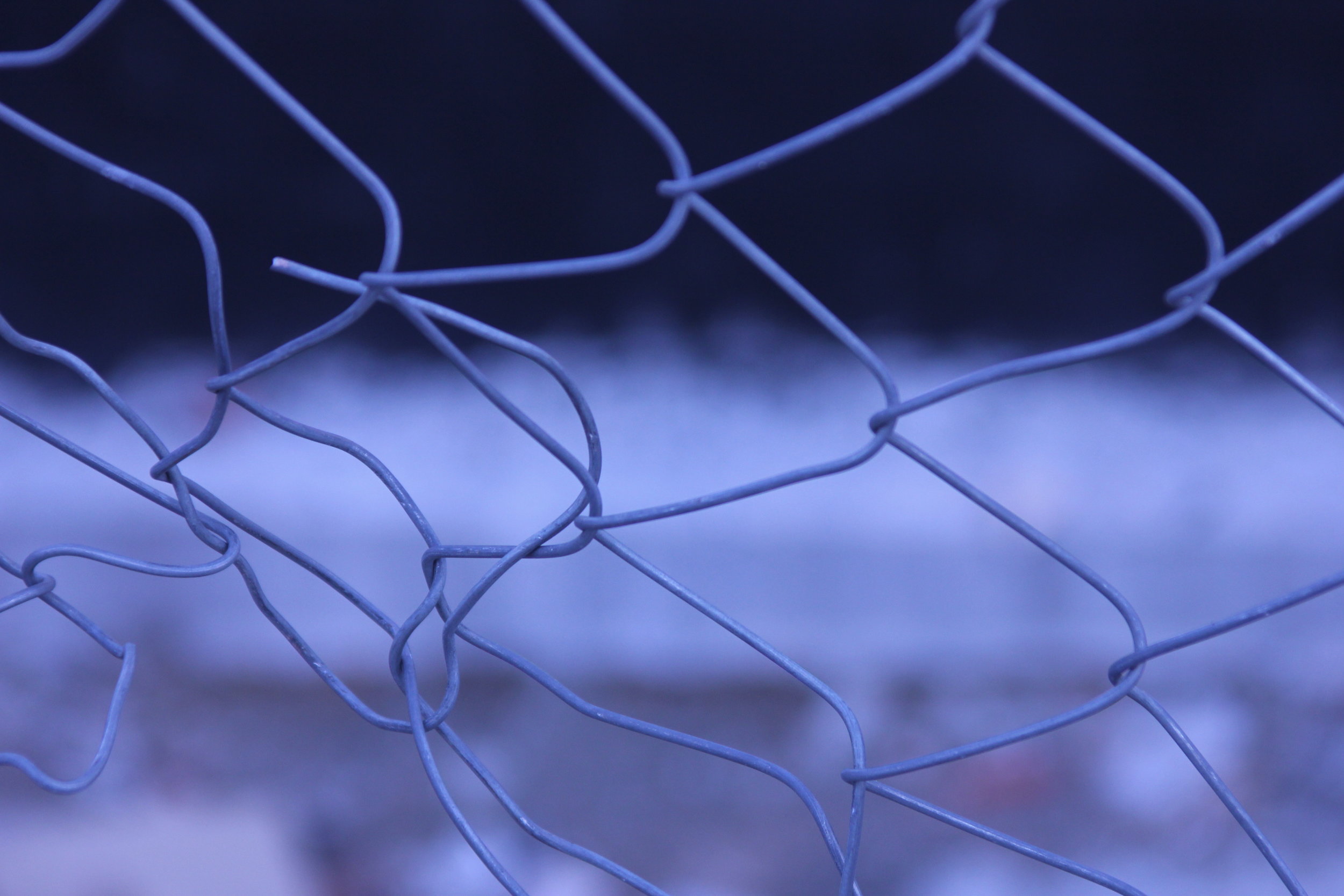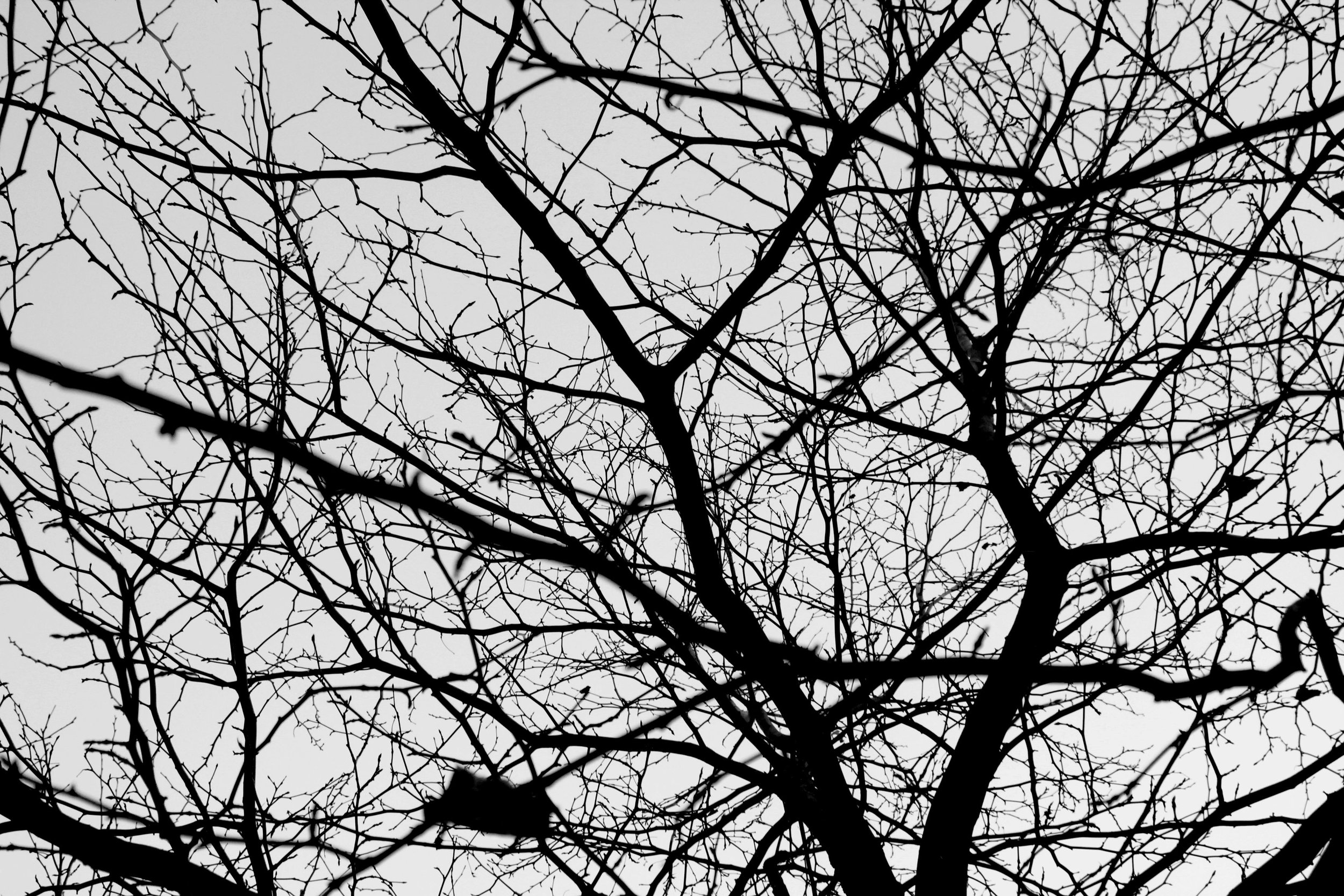This March, Baltimore United Viewfinders Collective hosted OVA East: Finding Home, an exhibition, workshop, performance, and open mic at MICA PLACE. Let me tell you about the various elements that made up this event.
First, as you've hopefully been reading about, the Junior Viewfinders exhibited their homes and neighborhood that they've been built over the last two months. I won't go much deeper into this since you can read a detailed account of the project on this blog. We did have some Junior Viewfinders come out to the event and perform a rap and a dance during the open mic. It was a joy to see them proud of their artwork and sharing their talents on the mic.
The Senior Viewfinders also exhibited some the photos that they'd taken while working on Eastside Stories III. They had 8 large scale prints of family members dancing, little siblings playing, friends at prom, and much more. We even had one photograph taken by Terri, an 8-year-old Junior Viewfinder.
Another part of the exhibition was a collaboration with Powell Recovery Center. Gerad Forte, our executive director, had been teaching storytelling and filmmaking at Powell for several month. However, they designed their own installation during their art class. The theme was what home meant to them, as people who were in treatment and recovering from addiction. They drew and wrote their responses to the meaning of home on urinalysis cup, which they then connected to turn into columns that dangled from the ceiling. They also brought urinalysis cups filled with soil and some flower seeds, inviting attendees to take one home. Finally, they had a zine of writings that were also available for attendees.
We concluded the event with a performance and open mic. Black Chakra, an incredible local spoken word poet, performed several mesmerizing poems. Definitely check out his work! For the open mic, a lot of the residents from Powell shared what home meant to them--some through song, some through rap, and some simply told their stories.
Overall, it was a really powerful event that brought together a number of different communities in Baltimore to share their stories and definitions of home. If anything, it showed just how complex and complicated the idea of home is, which is the very core of the issue we sought to explore in Finding Home. Check out these great photos from the event below!
